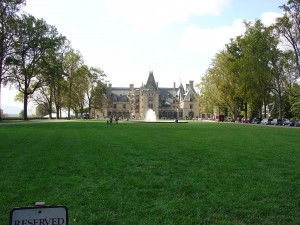Tall fescue is considered one of the best cool season lawn grasses around homes and on public and commercial lands in the eastern and midwestern U.S. (USDA hardiness zones 5 thru 7). The cultivar K-31 is still an old standby, but so many better performing cultivars have now within reach. They feature improved color, plant density, and finer leaf texture. New cultivars also offer better disease resistance.
Between 2007 – 2011 over 100 varieties have been evaluated (AR, KS, KY, MD, MO, NC, TN, and VA). The recommended varieties include: LS 1200, BULLSEYE, RHAMBLER SRP, SHENANDOAH III, TURBO, FAITH, CATALYST, FALCON V, FIRECRACKER LS, SHENANDOAH ELITE, BRAVEHEART, COCHISE IV, WOLFPACK II, SPYDER LS, SIDEWINDER, RK 5, TRAVERSE SRP, TALLADEGA, 3RD MILLENNIUM SRP, MONET, SPEEDWAY, and MUSTANG 4.
Tall fescue should be mowed at a cutting height of 3 to 3.5 inches, fertilized with 1-2 lbs of nitrogen per 1,000 sq. ft. in early spring and again in late summer. An established lawn of tall fescue is moderately drought tolerance and does not require summer irrigation and feeding. During exceptionally hot dry summers, tall fescue may naturally turn brown, but greens up when adequate natural rainfall returns.
When purchasing seed containing several tall fescue varieties, the grass mix does not need to contain only the varieties mentioned above. It’s more important to utilize the strengths that two or more varieties contribute jointly.


 Posted in
Posted in 
